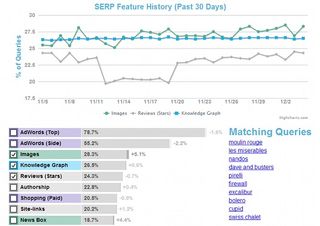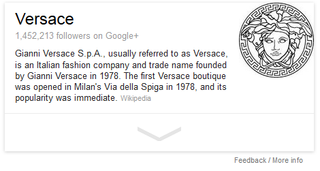How to improve your organic SEO and beat the paid search results
With Google search beginning to favour paid results, Richard Baxter explains how to optimise your site to reclaim that lost organic search traffic.
Google has been on a mission to "Organise the World's Information" for some time now, its carefully planned route to launching features such as Knowledge Graph, Long Form Article ("In-Depth Articles"), and Hummingbird results fuelled by savvy technology acquisitions of companies such as Freebase.
While Google's search results are evolving rapidly, someone in the business must be able to pay the bills. That responsibility lies with the Ads & Commerce Team (led by Sridhar Ramaswamy, Senior Vice President, Ads & Commerce) – an area of Google responsible for revenues driven by their "paid search" ads, experimental features and retargeting platform.
No search marketer should blame an organisation for wanting to improve its product, satisfy its users and drive higher revenues, though there's definitely an air of resentment among some when it comes to the diminishing real estate set aside for organic search results. Fortune favours the rich, or in this case, the revenue-generating features of a Google search results page.
Dr Pete Meyers, Data Scientist at SEO Software Company Moz.com, has dedicated his recent work to studying the features found in Google search results. His results culminates in this study on the Google "Mega SERP" – a composite of all of the features found in live Google search results. Dr Pete gave me a really fascinating preview of the prototype of a soon to be released update to algorithm update tracking service Mozcast. Very soon we'll all be able to see just how crowded search results are for a given set of queries:

Dr Meyers explains: "The bar in the graph shows total ad presence (top/side/bottom + shopping) - it's currently 86.5%. In other words, 86.5% of the queries they track contain some major paid feature."
With competition for user attention so high and paid search results so prominent, it's fair to say the businesses dependent on organic results may be feeling a little short changed. So few organic results appear above the fold, that they may be invisible to users unless a top organic position is held.
The take-home? It's time to implement the technical work to optimise your site for the other features found in search results: images, Knowledge Graph, Review Ratings, Authorship. There's much more data too, in Dr Meyer's prototype tool, we found video snippets were present in a significant number of search results pages (16.5%) , and the new in-depth articles features were increasing in popularity (6.3%).
Here's a helpful primer on what you'll need to implement to see your site's search results featuring some of the more prominent features in the SERPs to aid your visibility, and reclaim that lost organic search traffic.
Image Search Results
Example query: "tablet PC"

There are a number of ways to optimise your images to increase your visibility within Google image search, and the chance of being featured within the main search results (as seen in the 'tablet PC' example):
- Use a short descriptive piece of text featuring desired keywords within the image alt text attribute.
- Save the image using a descriptive file name
- Create an Image XML sitemap
- Ensure your images directory isn't blocked by robots.txt
- Ideally host images on the same domain
- And surround the image with related text content to build a stronger page context/association
Shopify provided a round-up of some great tips that go beyond just SEO, to ensure you're delivering the best experience for users to enhance traffic generated via this channel.
Knowledge Graph
Example query: "Versace"

There are lots of components that make up Google's Knowledge Graph (or 'entity' based search), that can be leveraged to increase brand visibility:
- Firstly ensure that you have a Google+ page set up for your brand, and a verified site listed (see 'Authorship').
- Be active on Google+ as your latest posts can be seen within Knowledge Graph for brand related searches.
- If you have a physical address, connect your site with Google+ local
- Wikipedia is one component that Google references frequently within Knowledge Graph, so we have the ability to influence how your brand is portrayed by creating a Wikipedia page for your brand.
- Get your brand added to the Freebase.com database, as this is another component that Google references frequently.
- Incorporating structured data mark-up within your sites content, beyond the purpose of creating rich snippets, converts standard text into an 'entity', or a piece of content that has been classified by a pre-defined data model such as Schema.org. With tools such as Google's Data Highlighter, the process of incorporating structured data becomes even easier.
Review Ratings
Example query: "Shampoo"

Generating the star rating that you see for IMDB in this example, can lead to an increase in CTR directly from search results.
There are a few different takes on this type of snippet but generally can be grouped as a single item review, multi-item review or an editorial review.
This type of rich snippet can be easily generated using mark-up such as Micro Data & Schema.org and verifying with the Structured Data Testing Tool. Google's Data Highlighter can of course be used too!
For more details see:
http://schema.org/Review & http://schema.org/AggregateRating
http://seogadget.com/micro-data-schema-org-guide-to-generating-rich-snippets/
Authorship
Example query: "Chicken Stew"

To generate the authorship snippets that you see here, all you need to do is verify yourself as contributor via Google+.
Firstly add a link from your web page to the authors Google profile using rel=author, for example for Richard Baxter:
<a href= "https://plus.google.com/110038692833123703514" rel="author">Richard Baxter</a>Then sign-in to your Google+ profile, and within the 'Contributor To' section add a custom link back to the corresponding domain and click save.
You can test this implementation using the Structured Data Testing Tool.
Video Snippets
Example query: "Shoes"

It's not only YouTube that can generate video thumbnails within search results, and like other forms of rich snippet, it can greatly enhance CTR.
It's a little more complicated than other forms of rich snippets, but here are some of the key aspects to displaying video thumbnails in search results:
- Self-host video content or use a secure video hosting platform that allows you to have control over where your videos are featured i.e. Wistia or Brightcove.
- Ensure your videos contain unique properties i.e. title, description, thumbnail urls etc. If your video ends up on YouTube, try and keep these elements unique as duplication can restrict your chances of generating a snippet.
- Create a Video XML sitemap
- Surround your videos with related text content, perhaps even consider generating a Video transcription to maximise the real benefit of the unique content presented in this media form.
- Apply Schema.org/VideoObject mark-up
Further reading:
https://support.google.com/webmasters/answer/2413309?hl=en&ref_topic=1088474
In-Depth Articles
Example query: "Smartphone"

This section of the Knowledge Graph provides access to content to allow users to explore the searched-for topic at a deeper level.
At the moment this feature certainly seems to favour larger publishers, but it's possible to influence this to some degree with:
- Wrapping your article content with Schema.org/Article mark-up, specific attributes to be aware of include headline, alternativeHeadline, image, description, datePublished, articleBody.
- Ensure authorship has been verified (see 'Authorship')
- Implement rel=publisher to connect your Google+ brand page with the website as a whole.
- Add schema.org/Organization mark-up to allow for the specified logo to appear as a source image for the article.
Words: Richard Baxter
Richard is CEO of SEOgadget.com.
Liked this? Read these!
- Brilliant Wordpress tutorial selection
- Discover the best tools for data visualization
- Choose the best website builder
Got an amazing SEO tip? Share it in the comments!

Thank you for reading 5 articles this month* Join now for unlimited access
Enjoy your first month for just £1 / $1 / €1
*Read 5 free articles per month without a subscription

Join now for unlimited access
Try first month for just £1 / $1 / €1
Get the Creative Bloq Newsletter
Daily design news, reviews, how-tos and more, as picked by the editors.
The Creative Bloq team is made up of a group of design fans, and has changed and evolved since Creative Bloq began back in 2012. The current website team consists of eight full-time members of staff: Editor Georgia Coggan, Deputy Editor Rosie Hilder, Ecommerce Editor Beren Neale, Senior News Editor Daniel Piper, Editor, Digital Art and 3D Ian Dean, Tech Reviews Editor Erlingur Einarsson and Ecommerce Writer Beth Nicholls and Staff Writer Natalie Fear, as well as a roster of freelancers from around the world. The 3D World and ImagineFX magazine teams also pitch in, ensuring that content from 3D World and ImagineFX is represented on Creative Bloq.




